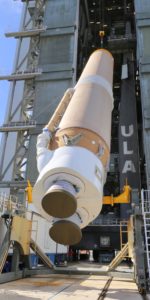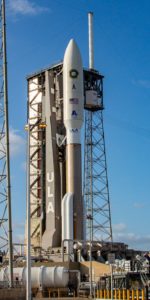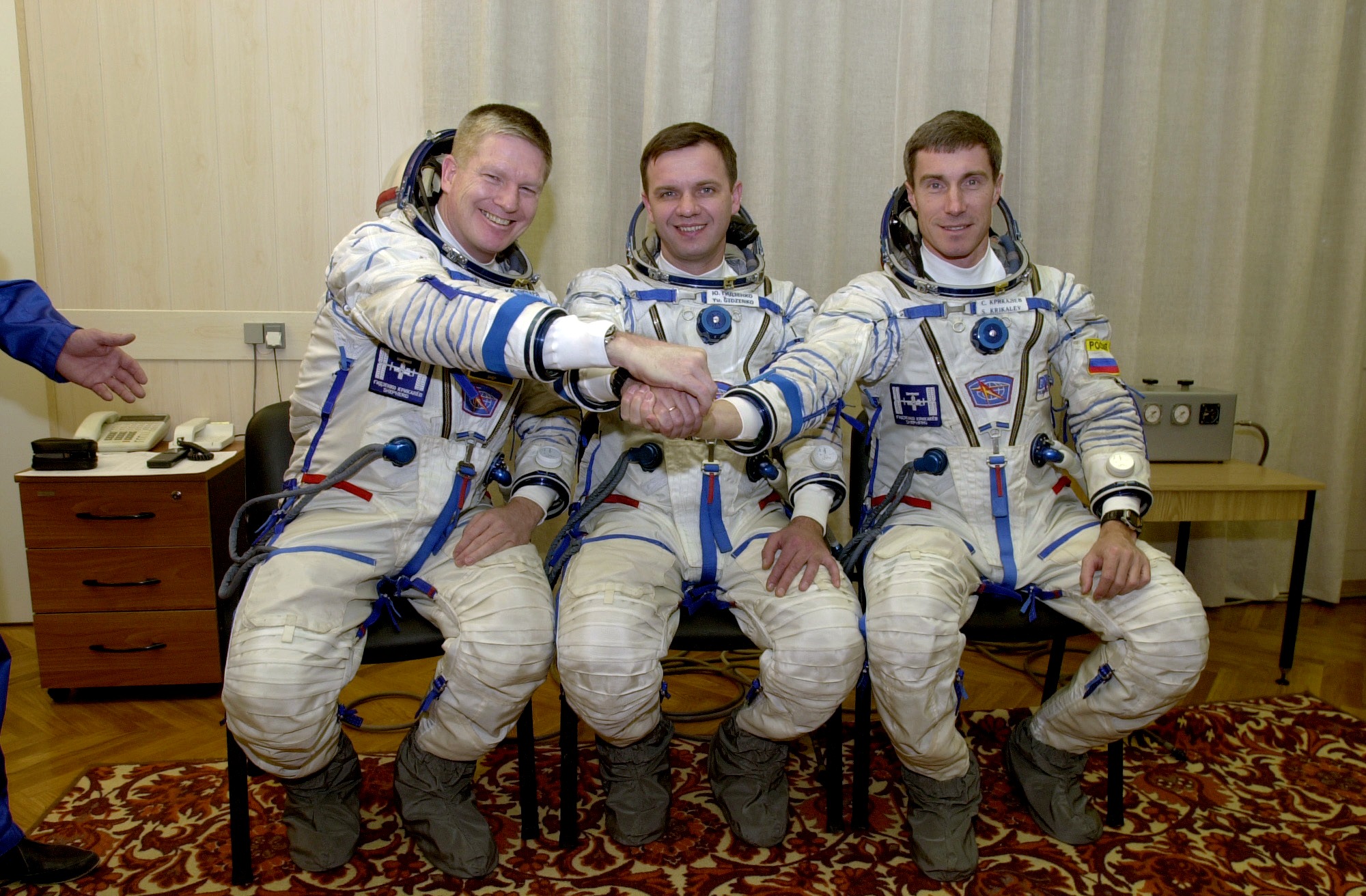
Twenty years ago today, the first team of astronauts and cosmonauts arrived at the infant International Space Station (ISS) to begin a new era; one which would see more than 240 humans from 19 sovereign nations living and working in low-Earth orbit on a continuous, unbroken basis. In so doing, they would provide our current best-possible analog for someday voyaging to Mars.
As outlined in a recent AmericaSpace article, Expedition 1 Commander Bill Shepherd of NASA and his Russian crewmates Yuri Gidzenko and Sergei Krikalev roared away from Baikonur Cosmodrome’s Site 1/5—the same launch pad at which Yuri Gagarin commenced his pioneering voyage—atop a mammoth Soyuz-U booster on the cold and foggy afternoon of 31 October 2000. Two days later, Gidzenko guided their Soyuz TM-31 spacecraft to a smooth docking at the aft longitudinal port of the station’s Zvezda service module to begin 4.5 months aboard the orbital outpost.
At the time of Expedition 1, few could have foreseen the convoluted twists and turns which would come in the following years, much less the catastrophic loss of shuttle Columbia on 1 February 2003, which brought the structural assembly of the station to a grinding halt for almost four years. When asked in October 2010 if the ISS had turned into what he expected it to be, Sergei Krikalev noted that, in terms of configuration, there were differences, with various components canceled—including NASA’s Centrifuge Accommodations Module (CAM) and Russia’s Science Power Platform (SPP)—due to budget cuts or the consequences of the shuttle disaster.
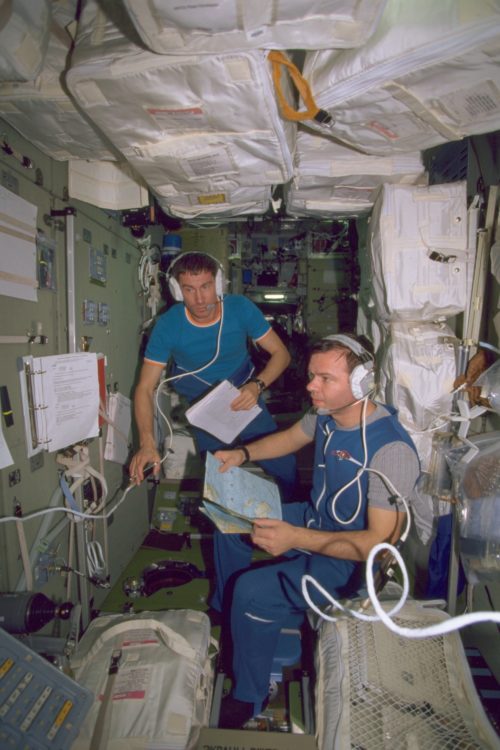
At the same time, few could have foreseen how the station would evolve: into a permanent home for up to six people, for months at a time, supplied by national governments and commercial partners and with a parallel Commercial Crew Program to deliver astronauts to the ISS in the post-shuttle era. In terms of science, technology and the ability of humans to function away from Earth, the station has already broken significant ground as international eyes now focus upon planting human bootprints on the surface of Mars in the coming decades.
By Bill Shepherd’s own admission, though, it was not until after Expedition 1 that the three men could fully appreciate that theirs was a pioneering mission of exploration. After Gidzenko oversaw the automated docking at Zvezda on 2 November 2000, they were simply too busy—setting up food warmers in the station’s galley, putting together their sleeping quarters, establishing communications links with the respective Mission Control Centers (MCCs) in the United States and Russia and configuring laptop networks—to fully contemplate the event upon which they had embarked.
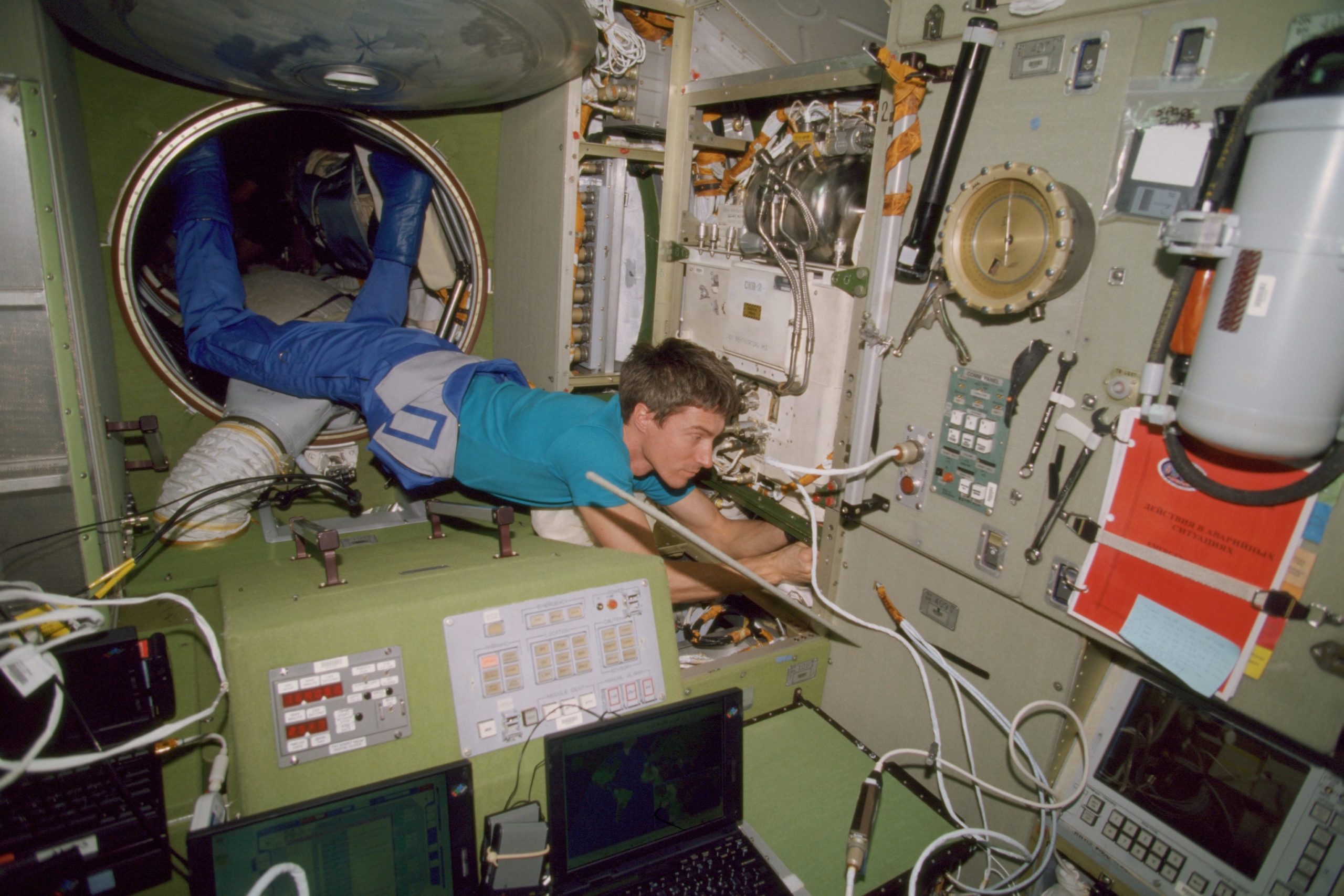
Just a day before their arrival, Russia’s Progress M1-3—which, in August 2000, became the first unpiloted cargo ship to arrive at the ISS—undocked from Zvezda’s aft longitudinal port to free it up in advance of the Soyuz TM-31 arrival.
And on their second day aboard the station, 3 November, the crew installed the Vozdukh regenerative air-scrubbing device into Zvezda’s living quarters to replace the previous supply of interchangeable lithium hydroxide canisters, as well as hooking up the Early Communications System and tending to a glitch with one of eight batteries in the service module, which had failed to charge properly. Krikalev pointed out that one of its connector pins appeared to be bent or broken. However, it was stressed that six batteries were more than sufficient to power ISS systems.
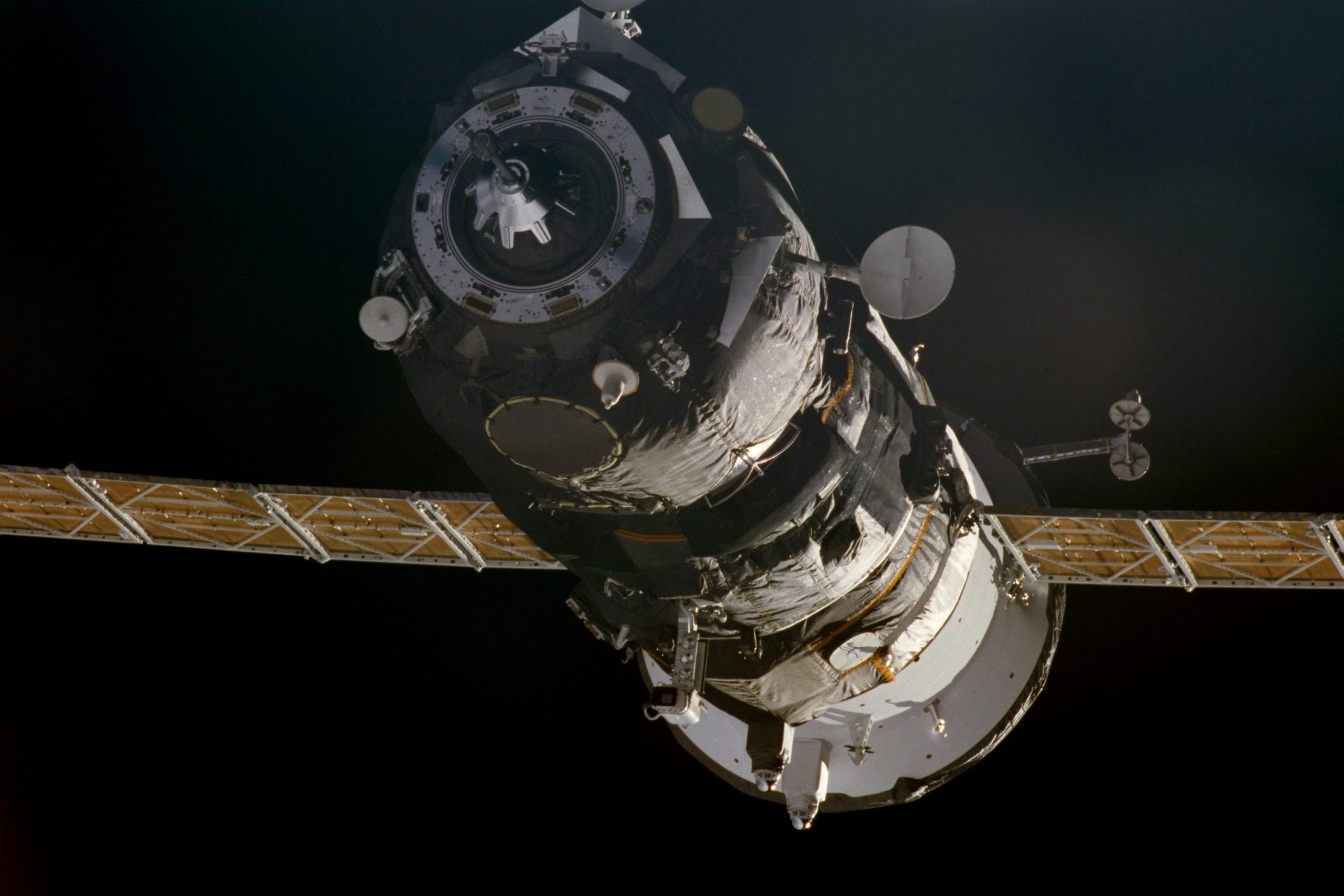
Over the following days, the crew installed and activated the station’s Elektron oxygen-replenishment system, as well as the TORU hardware to offer a backup manual docking capability for future unpiloted visitors—which needed to be in place, ahead of the planned Progress M1-4 launch—and found time to utilize the treadmill delivered in September 2000 by the crew of shuttle Atlantis.
On 16 November, Progress M1-4 flew out of Baikonur and, two days later, approached the ISS for docking. Unfortunately, its automatic rendezvous system failed to lock onto a comparable system on the station and Gidzenko assumed manual control to guide the cargo ship to a smooth docking at the Earth-facing (or “nadir”) port of the Zarya module.
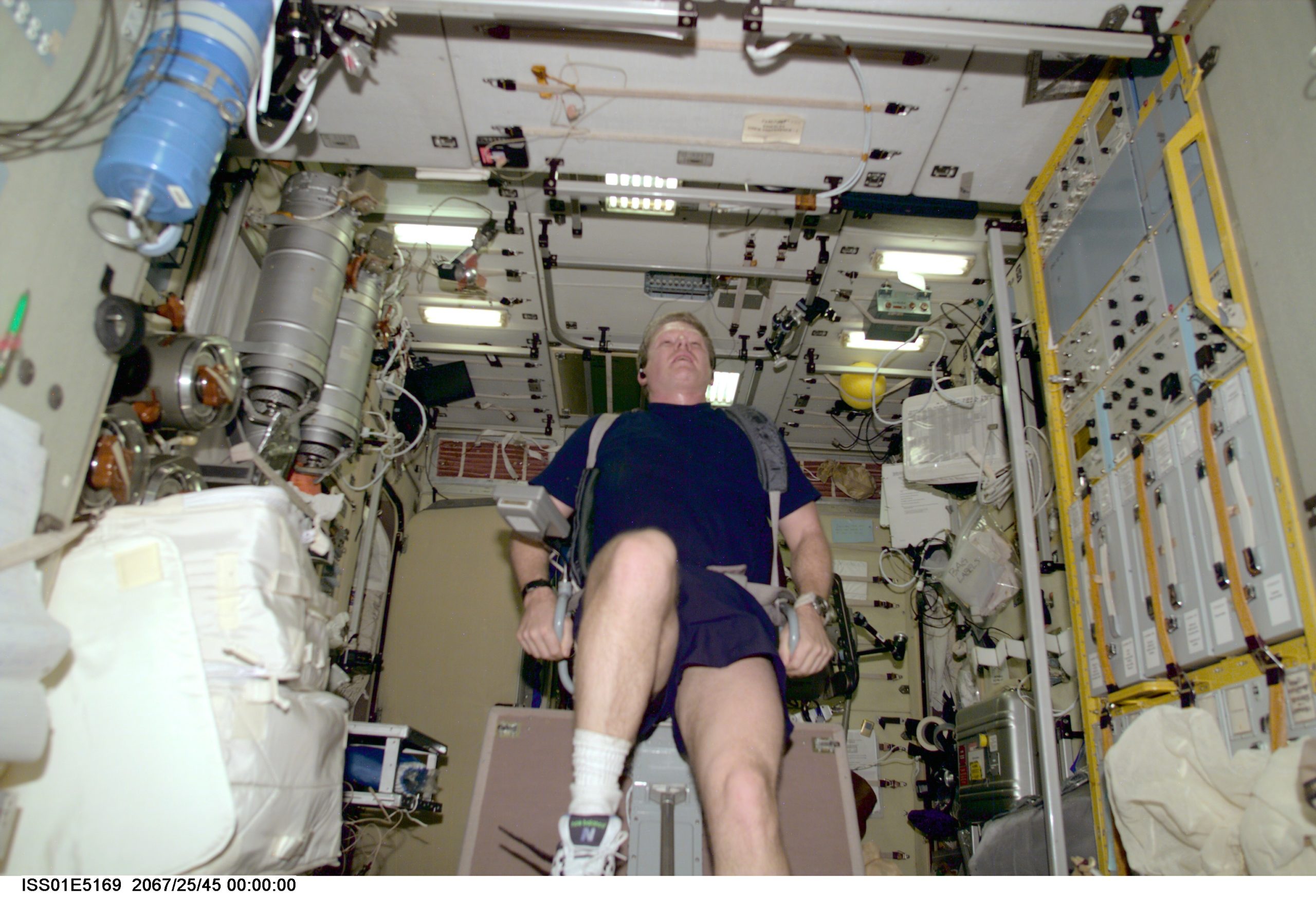
The visitation of Progress M1-4 was an unusual one, coming as it did between the arrival of the Expedition 1 crew and the planned launches of shuttle mission STS-97 to deliver the first set of photovoltaic solar arrays and radiators. However, its failed automatic docking caused a measure of consternation and a new software “patch” was developed as a possible solution.
Only two weeks after its arrival, on 1 December, it was undocked from Zarya and inserted into a “parking orbit” by Russian flight controllers, at a relative distance from the ISS of about 1,550 miles (2,500 km). “Over the next few weeks,” NASA reported, “U.S. and Russian managers will discuss whether to attempt a redocking of the Progress in late December or another rendezvous without a docking, to test a software patch as a solution [to] an apparent problem in the Progress’ navigation system, which occurred during its automated approach to the ISS.”
In addition to satisfying the requirements of testing the software patch, Progress M1-4’s departure cleared a path for the rendezvous of shuttle Endeavour and her crew as they approached a docking at Pressurized Mating Adapter (PMA)-3, then affixed to the nadir interface of the Unity node. The STS-97 crew delivered and installed the P-6 segment of the Integrated Truss Structure (ITS), atop the Unity node.
Hatches between the shuttle and ISS opened a few days later, on 8 December, due to the need to reduce Endeavour’s atmospheric pressure during the EVA preparations. With the skippers of Expedition 1 and STS-97 being active-duty U.S. Navy officers, it fell to Shepherd to ring the ship’s bell to welcome the shuttle crew aboard and for STS-97 Commander Brent Jett, snapping a smart naval salute, requesting permission for himself and his men to come aboard.
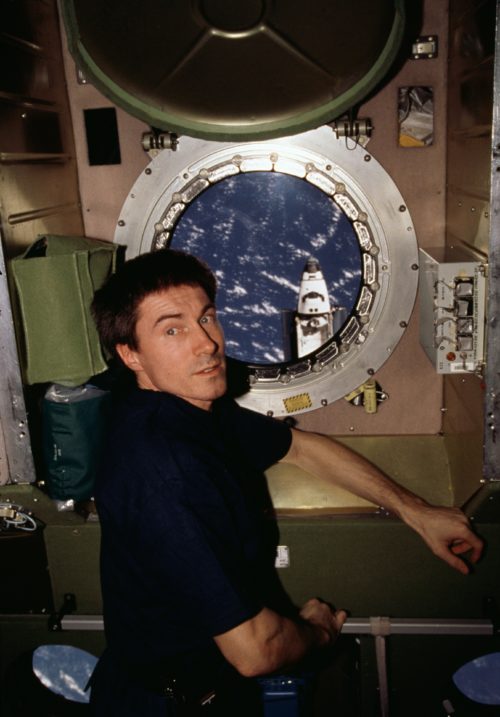
With the departure of STS-97, the ISS now had five times more power-producing capability—around 50 kilowatts—which, among other benefits, allowed the Expedition 1 crew to run the Elektron system continuously and open up the station’s Unity node on a permanent basis. And two weeks later, on 26 December, Progress M1-4 was maneuvered to a distance of about 650 feet (200 meters) and manually redocked by Gidzenko at the Zarya nadir port.
It remained in place for six weeks, serving as a reservoir for trash and other unneeded equipment. During this period, having already observed Thanksgiving and eaten a dinner of ham and smoked turkey aboard the Zvezda module, Shepherd, Gidzenko and Krikalev became the first ISS crew to spend Christmas in orbit, opening presents and receiving holiday greetings from NASA Administrator Dan Goldin.
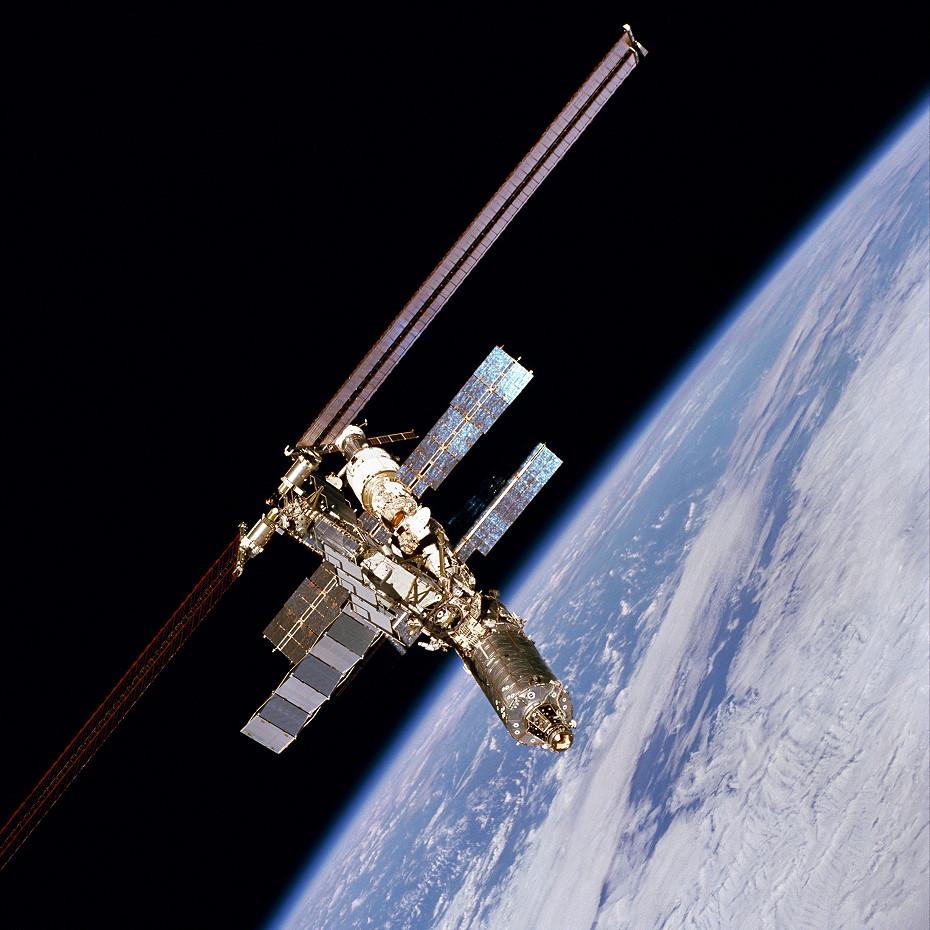
With the shuttle manifest taking shape, it was already clear that their return to Earth aboard Discovery on STS-102 would slip from late February 2001 until mid-March. However, in the opening months of the year made famous by Sir Arthur C. Clarke and later made infamous on 9/11, Shepherd and his crew witnessed the arrival of the U.S. Destiny lab aboard shuttle Atlantis on STS-98 in February.
Its addition allowed the ISS to eclipse Russia’s Mir in size and pressurized volume and become the largest and most massive inhabited object ever operated beyond Earth’s “sensible” atmosphere. In fact, by the time the STS-98 crew departed, the ISS tipped the scales at 224,000 pounds (101,600 kg). Added to this was its pressurized extent of 13,000 cubic feet (368 cubic meters), which exceeded even the voluminous Skylab.
It was to this fledgling version of today’s ISS that Shepherd, Gidzenko and Krikalev bade farewell, as they prepared to return home aboard Discovery with the STS-102 crew. When their feet touched Earth again on 21 March, they had accrued 140 days aloft, of which 136 had been spent aboard the station. Both Gidzenko and Krikalev would visit the ISS again—the former on a visiting “taxi” mission in the spring of 2002, the latter in command of Expedition 11, which welcomed the resumption of post-Columbia shuttle flights, in mid-2005—but Shepherd retired from NASA to pursue private interests.
In Shepherd’s mind, the usefulness of the station in preparing the human body for the long journey to Mars is critical. When he returned to Earth, he talked the Expedition 1 flight surgeon in letting him drive a van around a nearby parking lot. “I was feeling really good,” Shepherd recalled. “I was able to walk around, stand up. I didn’t have any problems with getting around.”
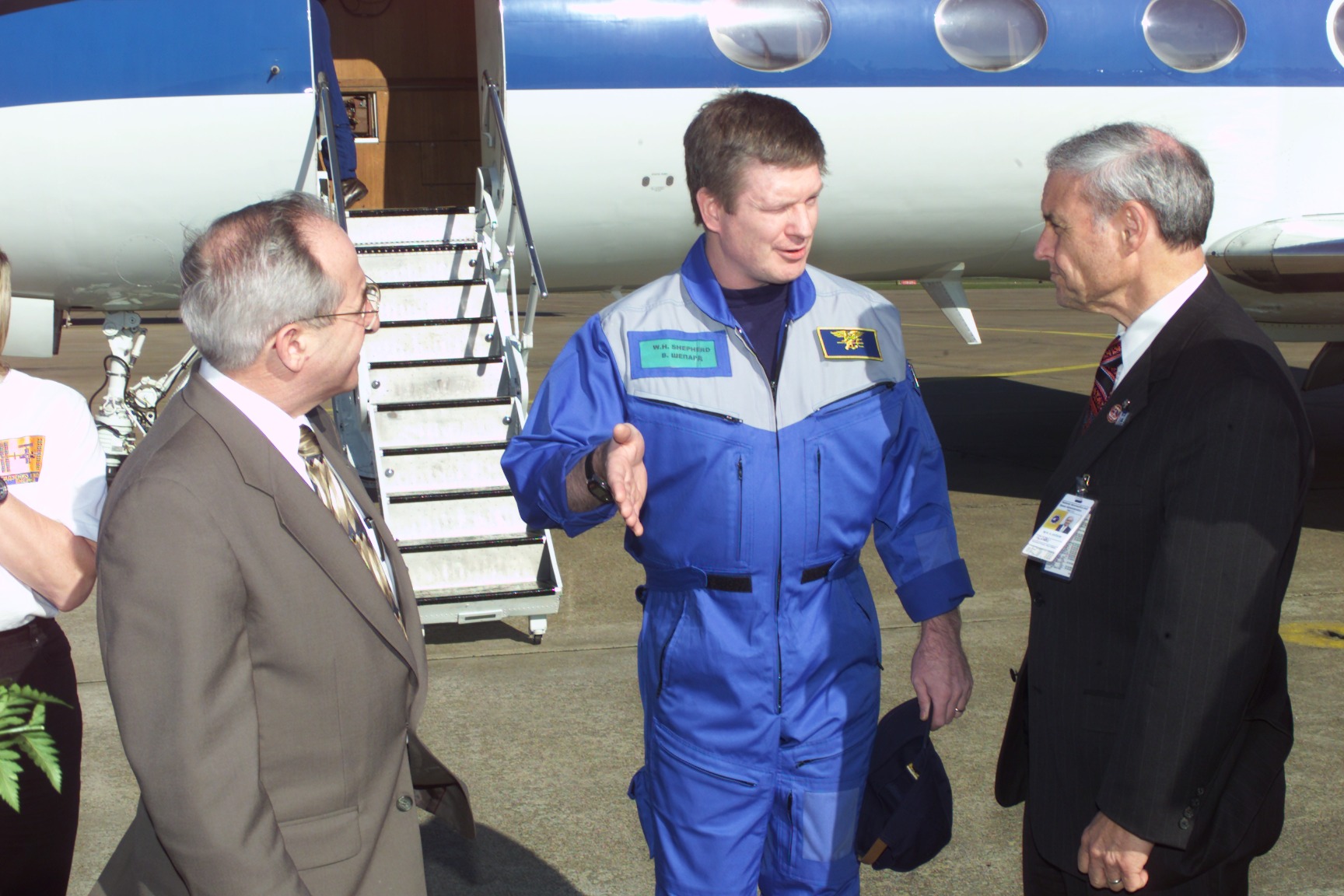
Then a thought struck him: If he could climb into a vehicle and drive it, “without hazarding myself or anybody else”, then a multi-month voyage to Mars, followed by a landing and walking or driving on the surface was conceivably possible.
“I very strongly had that sense,” Shepherd told a NASA interviewer. “I drove the van around the parking lot a little bit, got up, shut the door and said to myself: We can do this!”
And after 20 years, we have.




